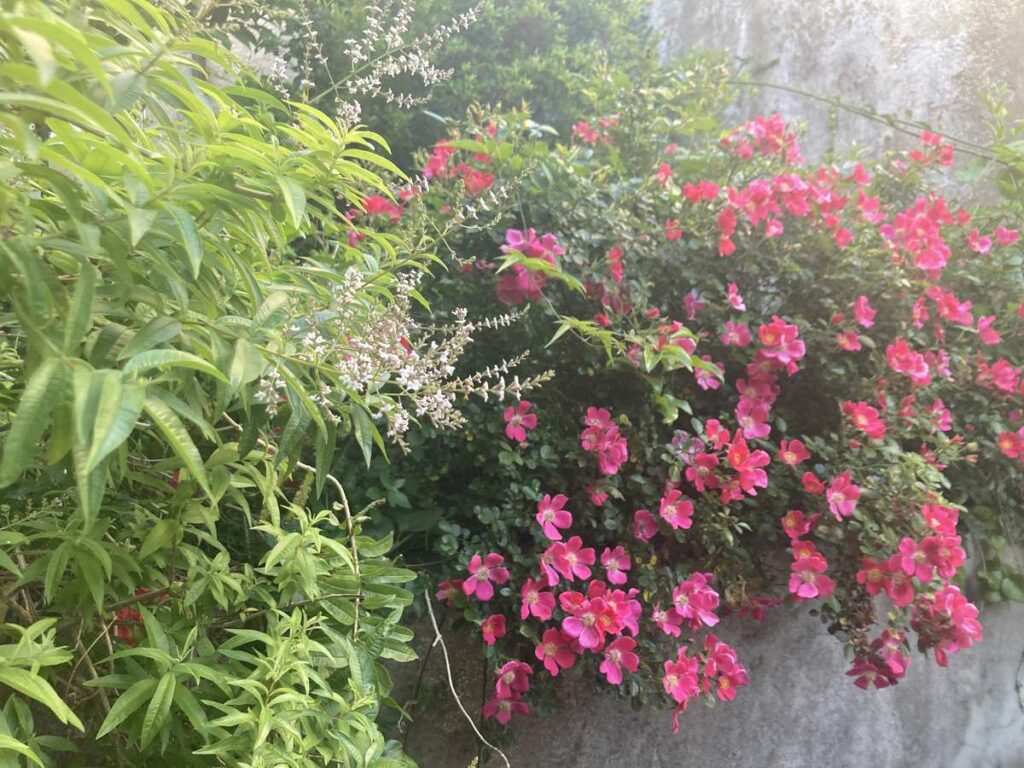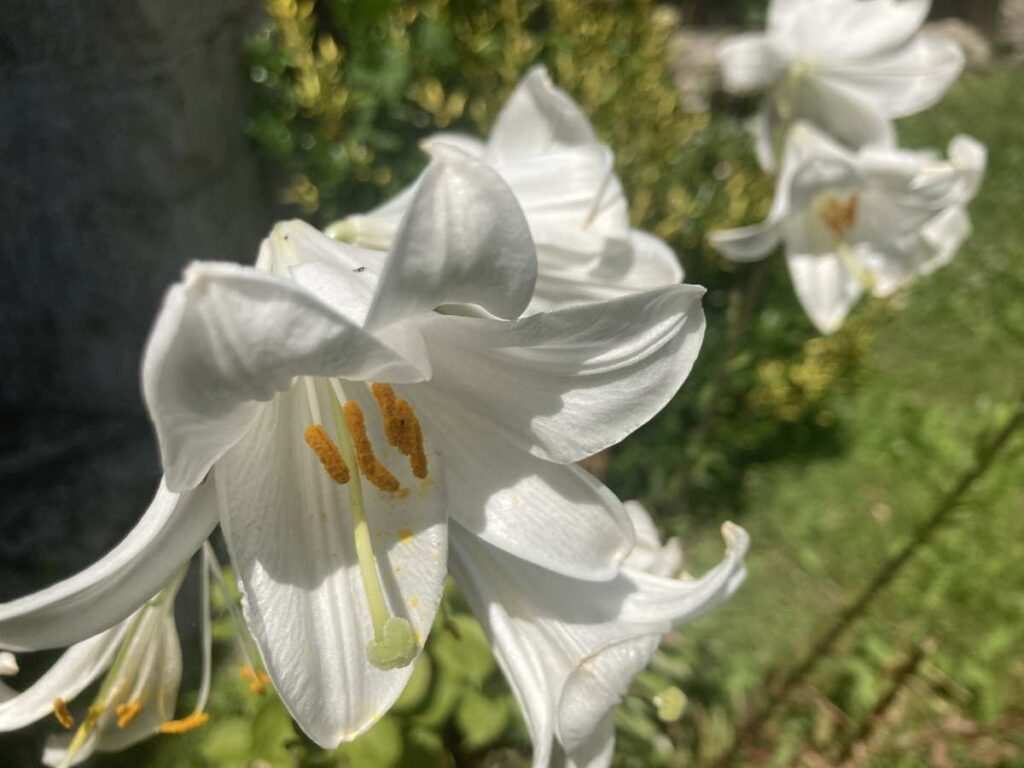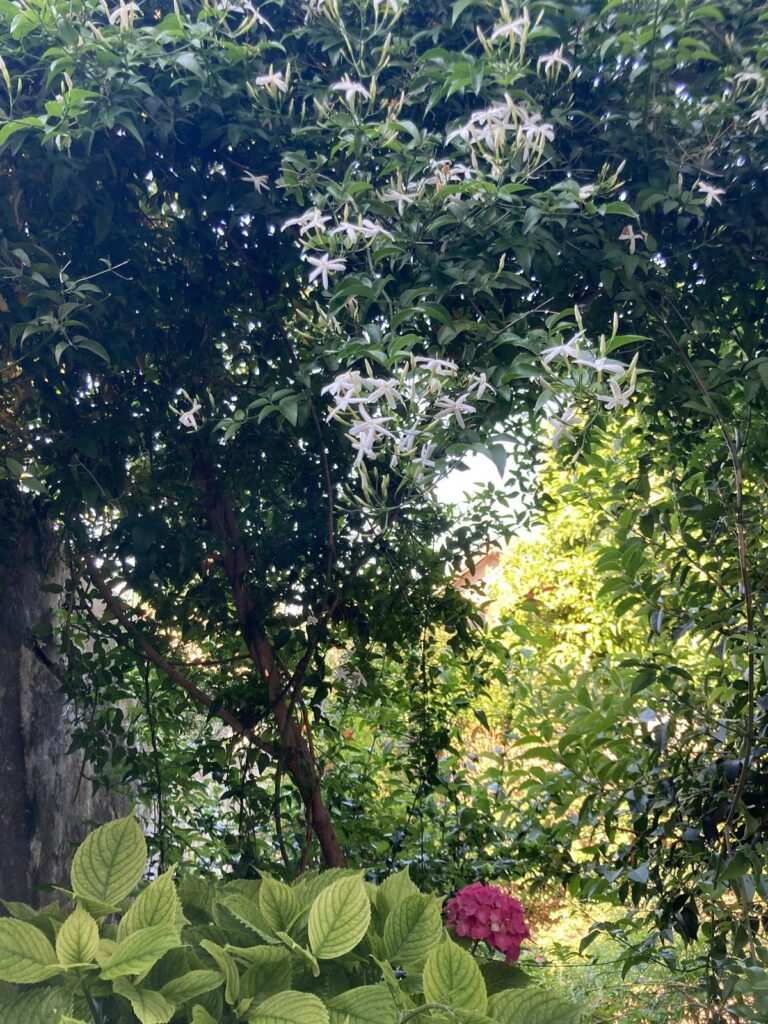The peculiarity of Cavtat urban landscape is perhaps most evident in its garden design. Almost every house has its own personal garden – its own microcosm within the high walls separating it from the street or public space. Sometimes, the contents of the garden may spill over to the street; however, even if such thing does not occur and some mischievous wisteria, bougainvillea or some other ornamental plant remains within the perimeters of the centuries-old walls, the casual passer-by will at least be able to experience their rich scent. Indeed, if one were to walk through the stepped streets of Cavtat in any season, they cannot avoid the intoxicating scent of the hidden gardens containing at least one plant in bloom.
The reading of Matvejević’s The Other Venice: Secrets of the City reveals certain similarities between Cavtat and Venice despite the fact that the entirety of Cavtat could fit inside a couple of Venetian streets within one sestiere. These similarities are primarily confined to the garden design. Matvejević writes: `Few people manage to discover the Venetian gardens, perhaps because they have no idea that there is room for them in such a small space.‘ The same can be applied to Cavtat – few visitors can enter the private spaces surrounded by the walls which once had a defensive function. Within these walled areas, the house is most often positioned in such a way that it leaves space for a small front garden (korta) and a slightly larger back garden.
Various types of vines cover the pergolas. Climbers and creepers cling to the walls, some are yellow, others are green, there are some red ones as well… Cypress, palm, a Lebanese cedar here and there, almond, fragile branches of jasmine and tamarisk, orange and lemon… Laurel and oleander, asparagus, rhododendron right next to the pillars and wells filled with more darkness than water. It’s as if a typical Cavtat garden were described.
…There are also various types of roses, carnations, geraniums or wormwood, hydrangeas, cumins, hyacinths, violets, lilies, immortelles – it is difficult to list all the species, especially those with exotic names or the fragrant herbs, because there is no garden without at least one bush basil, rosemary, mint, etc.
Some of these plants are planted in the ground, others can be found in arle (unpaved areas of the garden intended for flowers and flowering ornamental plants) and flowerpots, and there are even flowers sticking out from old discarded cooking pots. Gardens are colourful places where the harmony of diversity reigns.
The verses of the Dubrovnik Renaissance poet Mavro Vetranović conjure the images of the gardens of his time, which were not unlike the Cavtat gardens:
`Roses and hollyhocks are thriving everywhere,
Sweet violets, alecost, basil are also there,
Immortelles, lilies white – both in numbers immense,
Mushrooms of all colours found in great variance,
And ’tis from a great joy that grace is given life,
Where green vegetables’ scent strongly pervades the air...’
This blissful image of a garden has survived to this day, with the garden of the Bukovac House serving as proof of such botanical diversity within a small open space. In addition to its vivid colours, especially the hundreds of shades of green with their eye-soothing effect, the visitors will be amazed by the range of intense scents of the sour orange tree, the Japanese mock orange in bloom or the sprawling cumin plant.
Come and enjoy the heavenly garden of Vlaho Bukovac!



